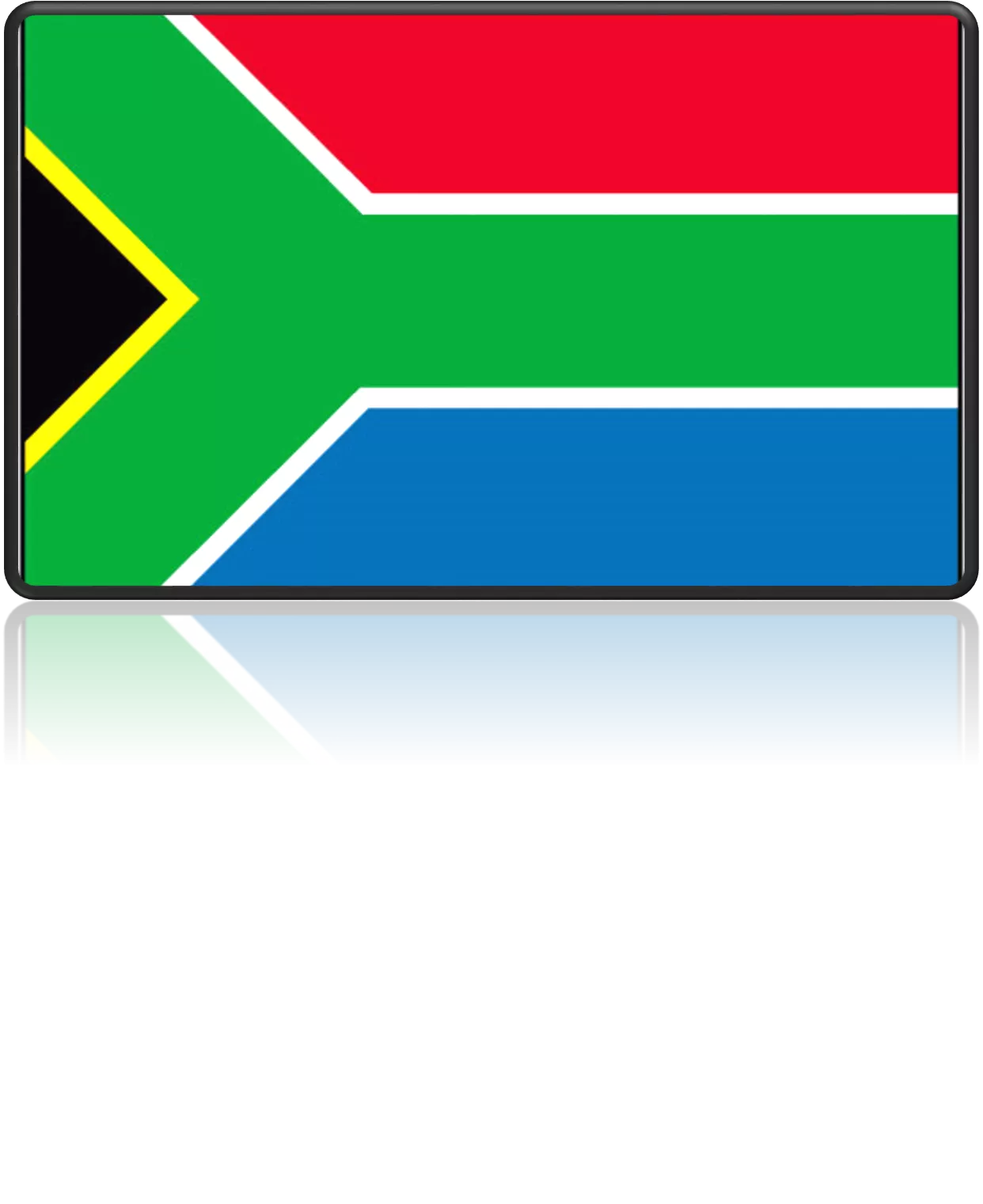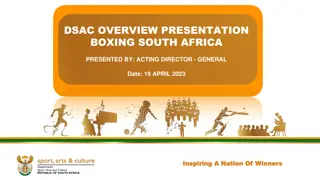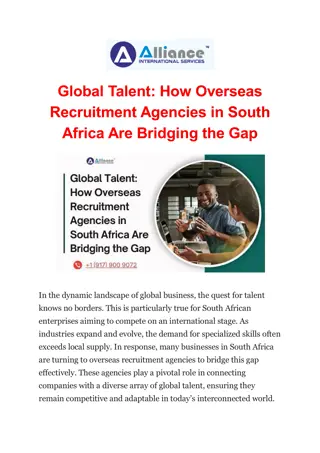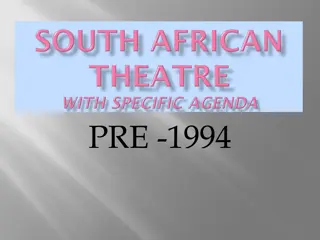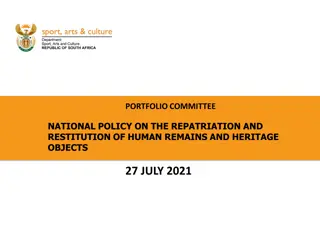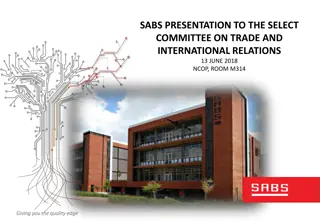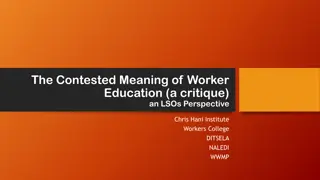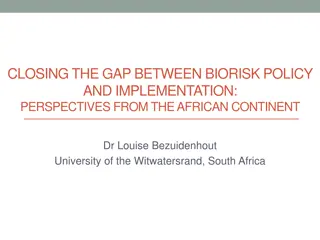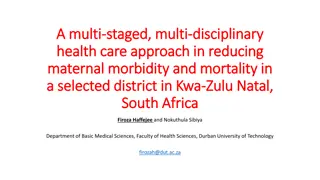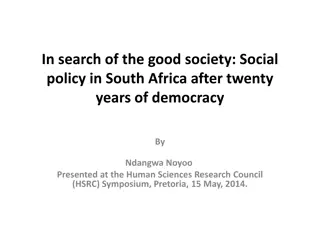A Brief History of Apartheid in South Africa
The Dutch established a trading station at the Cape of Good Hope in 1652, leading to the settlement of various European groups, who came to be known as Afrikaners. During the Apartheid era, racial tensions grew, leading to discriminatory laws that enforced segregation and denied basic rights to Black South Africans. The African National Congress was founded to resist the oppressive regime, but life was severely restricted for non-Whites under apartheid rule.
Download Presentation

Please find below an Image/Link to download the presentation.
The content on the website is provided AS IS for your information and personal use only. It may not be sold, licensed, or shared on other websites without obtaining consent from the author. Download presentation by click this link. If you encounter any issues during the download, it is possible that the publisher has removed the file from their server.
E N D
Presentation Transcript
The History In 1652, the Dutch set up a trading station in the Cape of Good Hope
The History Cont. The Dutch who were living at the Cape of Good Hope helped to supply their ships sailing from the Netherlands to the East Indies
The History Cont. Other European groups of people along with the Dutch settled in South Africa French Germans All European settles in South Africa were called Afrikaners
The HistoryCont. Afrikaners = all white people in South Africa Their official language was: Afrikaans
Life during the Apartheid By the 1900 s, much of South Africa had started to become racist and much of the government was dominated by white Afrikaners. African National Congress (ANC) was created to fight back against the Afrikaners. This was an uphill battle for black South Africans Stephen Biko
Life during the Apartheid Despite the newly formed ANC, racial tensions began to grow and this period of hate and segregation is known as the Apartheid (apart and separate)
Life during the Apartheid The government passed various laws that required separation of color. No black Africans or white Afrikaners were allowed to do anything together
Life during the Apartheid Black South Africans were not allowed to: Vote Receive a good education Have well-paying jobs Use the same facilities as white Afrikaners Visit the same hospitals or restaurants, or use the same transportation In addition they had to: Married couples had to have state permission to live together Carry identification papers with them at all times 1. 2. 3. 4. 5. 1. 2.
Apartheid Timeline 1992: Clinton Elected US President 1948: 1959: Vietnam War Starts 1975: APARTHEID BEGINS Vietnam War Ends 1955: US Civil Rights Movement Begins 1968: US Civil Rights Movement Ends 1989: Berlin Wall falls 1994: APARTHEID ENDS
Life during the Apartheid Most power, least numbers Whites Least power, most numbers Asians Coloreds Blacks
How Did it End? The international community began to exclude South Africa from global events Economic and political punishments Countries refused to trade with S.A. Internal protests Nelson Mandela First Black African to be elected president of South Africa
Nelson Mandela Born July 18, 1918 Given name: Rolihlahla (Troublemaker) Mandela His English teacher gave him the name Nelson His father influenced him to study to become a lawyer Became heavily involved in anti-apartheid movements in the 1950s and 60s
Nelson Mandela Cont In 1961, he became the president of the ANC which he co-founded He quickly realized that non-violent measures were not going to stop the apartheid so he made other arrangements: Sabotage campaigns Bombing apartheid courts, post offices, and government offices Raised funds from outside the country to train his ANC troops
Nelson Mandelas Arrest August 5, 1962 Mandela was arrested after being on the run for 17 months He was sent to prison for 27 years and he spent 18 of those years on Robben Island penitentiary His reputation grew in prison as an influential leader in S.A. Prisoners were segregated by race Mandela was allowed one letter and visitor every 6 months
Yard at Robben Island Prison
Mandelas Release February 11 1990, Mandela was released from prison 1991 F.W. de Klerk (white president of S.A. reversed the ban on the ANC, and repealed the apartheid laws) From 1990-94 he returned to the ANC and assisted in holding S.A. s first multi-racial election which he won Throughout his presidency he continued to rebuild S.A. and advocate for social and human rights organizations






